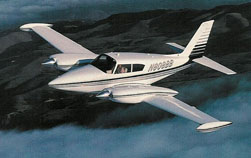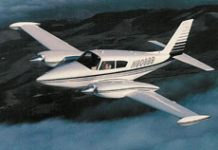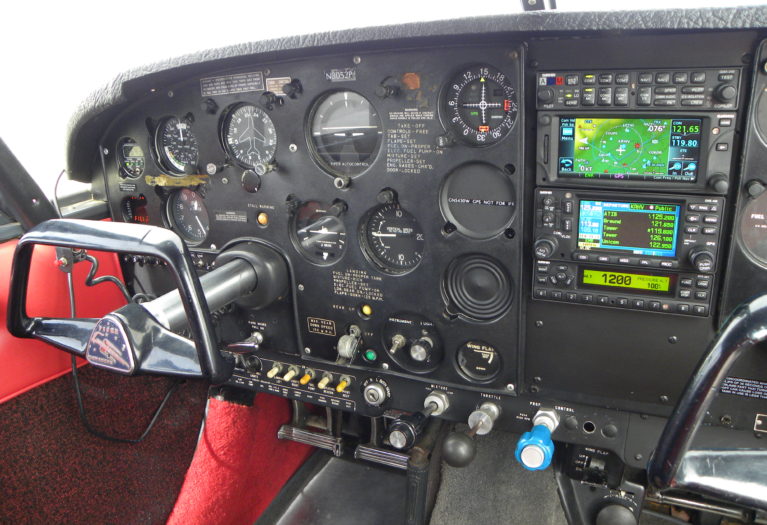
Is there a good-looking, four- to six-place light twin that goes 170 knots on 17gph? Such objectives may seem incompatible in the same airplane, but the truth is that from 1963 to 1972 Piper built about 2,200 airplanes with those characteristics. We’re talking about the Twin Comanches. For all its performance, it may be hard for some to believe that Twin Comanches use fuel injected variants of the venerable — and nearly bulletproof — 160-horsepower Lycoming O- 320 engine. That’s right, the same engine used in the Cessna Skyhawk, Piper Super Cub, and Piper Tri-Pacer, among other plodding, mundane airplanes.
Early model Twin Comanches, designated PA-30s, came out between 1963 and 1965. A bare-bones, single-vacuum-pump, day-VFR-equipped, four-seat PA-30 (brochures called it the “Sportsman” version) would have cost just $33,900 or so in those days. For a top-of- the-line “Professional” Twin Comanche, you paid about $41,200.
In 1965, the PA-30B was introduced. You can tell a B model by its six seats and third side windows. The options list was expanded to include wingtip fuel tanks, a heated windshield, propeller anti-ice, and an oxygen system. (NB: The Twin Comanche is not certified for flight in known icing conditions.) The tip tanks, which carry an extra 30 gallons of fuel, proved a very popular option, and by the late 1960s most Twin Comanches had either been ordered with them or outfitted with aftermarket tip tanks then manufactured by Brittain Industries.
Age belies the instrument panels of the straight PA-30s and the -B models. By now, many have been heavily modified and improved with the latest avionics, but an original-condition airplane will have a non-standard instrument configuration. Old- fashioned, black-background attitude indicators and backwards-turning, drum-type heading indicators were used. The heading indicator is where the attitude indicator ought to be, and the altimeter is over at the lower left, where we’ve come to expect to see the turn coordinator. Narco Mark 12s were de rigueur in the early 1960s, so don’t expect too much in the way of avionics sophistication from a standard-issue early Twin Comanche. Also, human factors was still an infant science in those days, and old Twin Comanches show it. For example, all the electrical switches were identical toggle switches, making them easy to misidentify, and circuit breakers were kept beneath a trap door below the power quadrant.
The -C and Turbo C models came out in 1968 and brought with them instrument panels laid out in the modern, standard T-configuration for the flight instruments. Magneto and starter switches were moved to a side panel, electrical switches were converted to internally-lighted rocker switches, and the circuit breakers were moved to the lower right subpanel. The C models also earned a few knots’ worth of extra cruise speed, thanks to engine beef-ups that included better valves and valve guides, and sturdier and better- lubricated crankshafts and camshafts.
The last of the Twin Comanches were the PA-39s, which were rolled out in early 1970. The big improvement here was the introduction of counter-rotating propellers. Even though Orville and Wilbur employed this concept, Piper hawked the PA-39s as revolutionary design breakthroughs. PA-39 C/Rs (for counter-rotating), as they were called, had the advantage of vastly reducing the adverse effects of asymmetric thrust in engine-out situations where the critical engine failed. The critical engine is the engine that, if it failed, would create the worst deterioration of performance and handling. In conventional American light twins, the critical engine is the left engine. That’s because both propellers rotate to the right, and the right propeller develops more thrust than the left, owing to its comparative surplus of thrust at an arm farther from the center of gravity than the left engine’s. Lose the left engine and that extra thrust can make the airplane yaw uncontrollably and, if the airspeed is low enough, cause the airplane to roll inverted.
By having the left propeller turn to the right and the right propeller turn to the left, the C/R models eliminate the critical engine. Yawing moments in engine-out situations are reduced, and low speed handling is greatly improved.
The Twin Comanche is an excellent airplane, and its value in the used market continues to rise. The airplane is well supported, thanks to a well-organized owners group and a plentiful supply of parts and modifications. The pilot new to the breed should seek out qualified instruction, maintain a high level of proficiency, and be well aware of the airplane’s maintenance requirements. The airplane’s age should be a warning flag to prospective buyers. Expect a continuation of the Twin Comanche’s airframe problems and go into ownership with the understanding that considerable investments in airframe fixes and additional inspections may be necessary down the road.
That aside, the Twin Comanche will serve you well, and its bang for the buck is exceeded only by its classy looks.
Used Airplane Review: Twin Comanche
Thomas A. Horne, AOPA Pilot, May 1996









